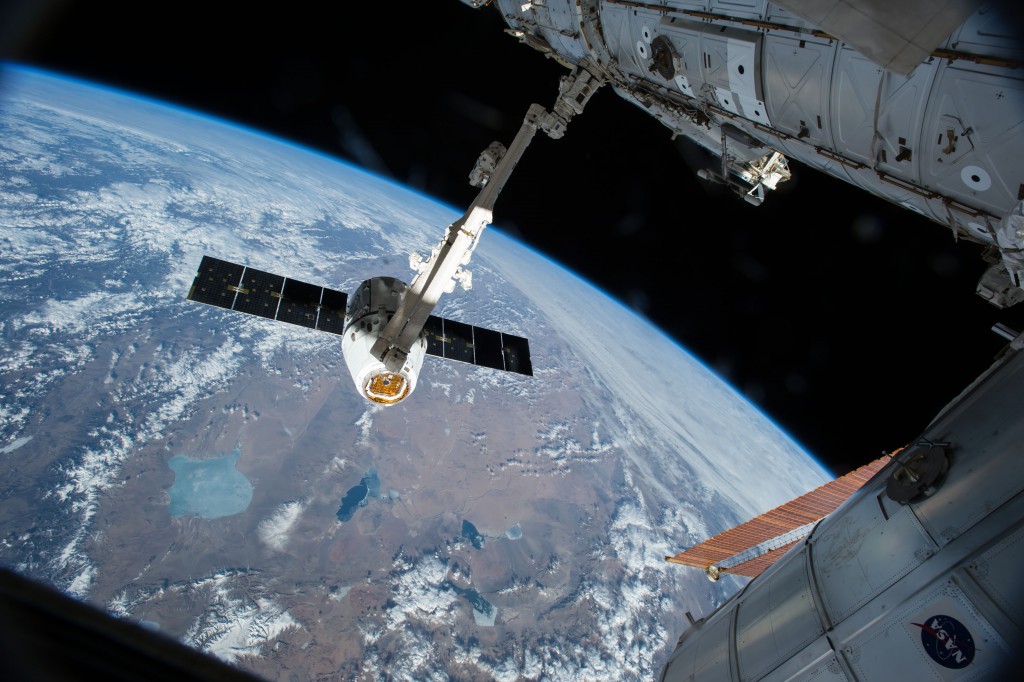 The SpaceX Dragon cargo spacecraft was berthed to the Harmony module of the International Space Stationon Friday at 9:29 a.m. EDT while the two spacecraft were traveling above the coast of Sierra Leone. The spacecraft is loaded with more than 4,300 pounds of supplies, science experiments, and technology demonstrations, including critical materials to support about 40 of more than 250 science and research investigations during the station’s Expeditions 43 and 44. The capsule is scheduled to spend five weeks attached to the station.
The SpaceX Dragon cargo spacecraft was berthed to the Harmony module of the International Space Stationon Friday at 9:29 a.m. EDT while the two spacecraft were traveling above the coast of Sierra Leone. The spacecraft is loaded with more than 4,300 pounds of supplies, science experiments, and technology demonstrations, including critical materials to support about 40 of more than 250 science and research investigations during the station’s Expeditions 43 and 44. The capsule is scheduled to spend five weeks attached to the station.
For an overview of newly delivered science investigations aboard Dragon, visit: https://www.nasa.gov/mission_pages/station/research/news/spacex_six/

“… more than 250 science and research investigations during the station’s Expeditions 43 and 44 …” So, if I understand correctly, the “handful” of astronauts do all these experiments. Which must mean that their training probably goes far beyond anything on earth. I wouldn’t know any laboratory staff that could oversee more than their “own” subject’s experiments and a few from areas close by. But certainly no microbiologist would oversee a laser experiment nor a physicist a microbiological assay etc. So these astronauts have to be physically able, then be an expert in their own field of study and … then some.
I love this space fact, keep it up
They get a lot of help from folks on the ground – the ISS science operations center is in Huntsville, Alabama, and they support the crew in real-time during experiments and can even run many experiments remotely from the ground, without astronaut help after they are set up in the racks!
I always have been interested in the space program. Thank you for the pictures especially the international space station; keep up the great work.
I agree!
i am intersted what happen in our solar system coz we are lovers of z new one
They get a lot of help from folks on the ground – the ISS science operations center is in Huntsville, Alabama, and they support the crew in real-time during experiments and can even run many experiments remotely from the ground, without astronaut help after they are set up in the racks!